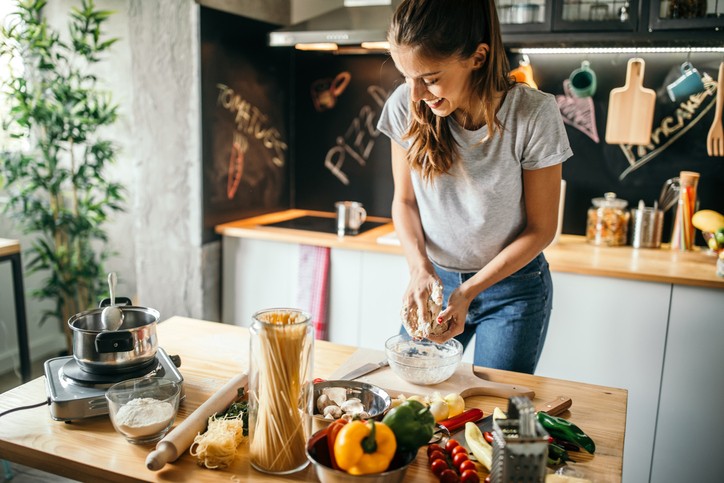Know When to Say When: Alcohol and Your Liver
APR 02, 2024The liver normally breaks down alcohol, but if the amount of alcohol consumed exceeds the liver's ability to break it down, toxins can build up to cause liver damage over time.
Read More
The basics of food safety are simple: Clean, Separate, Cook, and Chill.
Wash hands, utensils and surfaces with hot soapy water before and after food preparation and especially after preparing raw meat, poultry, seafood, and eggs. It should be a routine to wash hands after using the bathroom, changing diapers, or handling pets. Cutting boards should be washed in hot soapy water after each use or run through the dishwasher. If the cutting board is marred with many cracks, discard it. Bacteria love to live in cracks. Choose paper towels to clean up kitchen surfaces. Throw away the towel. If using cloth towels, wash them often in the hot water.
If possible, use one cutting board for fresh produce and use a separate one for raw meat, poultry, and seafood. Never place cooked food back on the same plate or cutting board that previously held raw food. Separate raw meat, poultry, and seafood from other foods in your grocery cart and in your refrigerator. In the refrigerator, consider placing raw foods in sealed containers or plastic bags to prevent them from cross contaminating other fresh foods. Discard marinade that has been used to flavor raw meat. If you want to use the marinade, you will need to boil it before using it on cooked food. Boiling should kill any bacteria transferred from the meat to the marinade.
Use a thermometer to achieve a high enough temperature to kill harmful bacteria and avoid food borne illness. On a buffet table, cooked food should be kept at 140 degrees or higher. Use chafing dishes, crock pots, and warming trays to keep food safe.
Bacteria grow rapidly in the Danger Zone. Food should not be stored at the unsafe temperatures between 40 and 140 degrees Fahrenheit. Be sure to refrigerate foods quickly. Refrigerate or freeze prepared foods and leftovers within two hours or less. If the temperature outside is over 90 degrees, food should be refrigerated within an hour or less. Thaw food in the refrigerator or in cold water. Place the frozen food in a sealed plastic bag and change the cold water every 30 minutes. If you thaw food in cold water, be sure to cook the thawed food immediately. In the refrigerator, cool air must circulate to keep food safe, so do not over-stuff the refrigerator.
For pregnant women, newborns, young children, the elderly, and people with compromised immune systems, the safe storage time chart is very important. Listeria monocytogenes (L. monocytogenes) is a bacterium that frequently lives in refrigerated foods including lunchmeat and hot dogs. Listeriosis is an infection that can occur when a person eats food contaminated with this bacterium. For high risk groups, it is best to avoid soft cheeses like feta, Brie, and blue cheese, prepared meat spreads, and smoked seafood unless it is cooked in a casserole. Hot dogs and luncheon meats should be cooked until steaming hot.

The liver normally breaks down alcohol, but if the amount of alcohol consumed exceeds the liver's ability to break it down, toxins can build up to cause liver damage over time.
Read More
An innovative device is helping snorers get a good night’s rest and reducing their risk of health issues – all without the need of a sleep mask or cpap.
Read More
Starting as early as February and persisting through October, seasonal allergies can cause a variety of annoying symptoms.
Read MoreWhen you need local health information from a trusted source, turn to the CHI Health Better You eNewsletter.